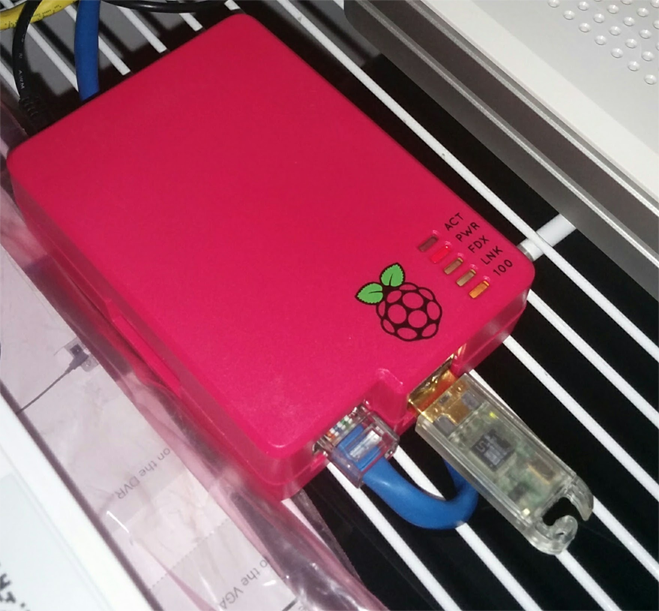Ansible Provisioning for my Raspberry Pi
A few years back, I bought a Pogoplug and got Arch Linux ARM running on it. It was a lot of fun to work on and I eventually got it configured as a Samba file server, DLNA media server, and running my vistaicm-server project to control my Honeywell Alarm System. It was suprisingly stable and I learned to love Arch Linux while fiddling with it.
Last week, it finally hard crashed. It simply will not turn on anymore and I suspect it has something to do with the power supply on it. Rather than trying to get it working again, I decided to just replace it with one of the Raspberry Pi devices I had laying around. After all, I’ve been looking for a good use for one of them. Also, getting Arch Linux ARM actually running on the Pogoplug was a bit of a chore and hard to diagnose when there was a low level boot issue because there is no display adapter. On the other hand, getting Arch running on the Pi and hooking it up to a display via its HDMI port when needing to diagnose a boot problem is trival.
When I initially setup the the Pogo, I did it manually and over time. You know, I would decide one day, “Hey, I want to setup minidlna on it so I can stream my movies to my TV”. So, I would setup and configure minidlna. Then, later, I would decide to install transmission as a BitTorrent client and would do the necessary config at that time. This made for a lot of manual provisioning logic that was not backed up and hard to remember. There were a few times over the last few years that I completely rebuilt it from scratch, for various, reasons, and it took quite awhile to get it back to its previous state. I would have to find backups of config files (if I was lucky), remember what I had installed, and fiddle with it to get it just so.
This time, however, I was going to use Ansible to automate the provisioning! I’ve been using Ansible more and more and find it suitable for project large and small. It’s really nice to have the entire provisioning process scripted and in source control knowing that if the Pi crashed or I needed to rebuild it for any reason, I could be back up and running in a matter of minutes.
The end result is located in this GitHub repository: https://github.com/bradymholt/tiger-provisioning.
Currently, the provisioning script does the following:
- Removes the default
alarmuser - Creates a user account with authorized_keys configured to allow key auth for SSH
- Sets timezone to America/Chicago
- Installs Node.js, samba, minidlna, and insync
- Installs some user utilties such as vim, htop, and unzip
- Installs and configures vistaicm-server so I can control my alarm system
- Configures external USB thumb-drive as destination for Google Drive sync via insync
- Configures samba to allow anonymous share access to media folder
- Configures minidlna to serve videos from the media folder
Thanks to ansible-vault, all my provisioning secrets (you know, credentials, keys, and such) are stored in an encrpyted file so that I don’t have to keep them in a separate location, and remember where they are. To rebuild this server, I just need to clone the repo, provide the vault password and run the Ansible playbook and I’m good to go.
Here is what my Raspberry Pi looks like, sitting on a shelf in my closet, drawing only about 1W of power.
